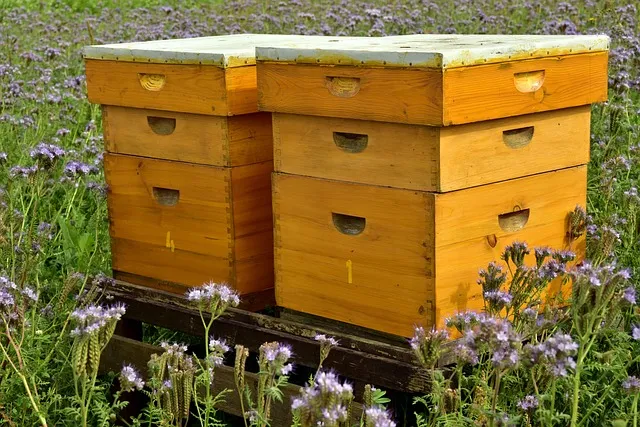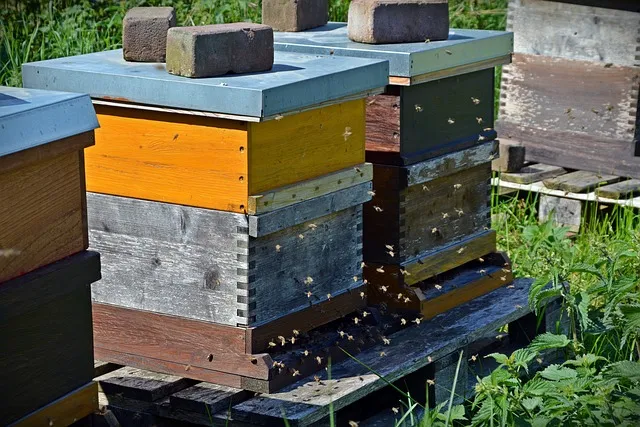Basic Supplies For Beekeeping beginners | Beekeeping Equipment
To raise a bee colony or colonies, you need some supplies and equipment. Most expenses in beekeeping are upfront. Thankfully, the supplies and equipment that you buy at the beginning will last for years.
Similar Articles you may like to read –
What is the best bee for beginners?
Do I have to buy a queen bee to start a beehive?
Do You Need Foundation on bee frames?
How much money is a queen bee worth?
Basic Beekeeping Equipment
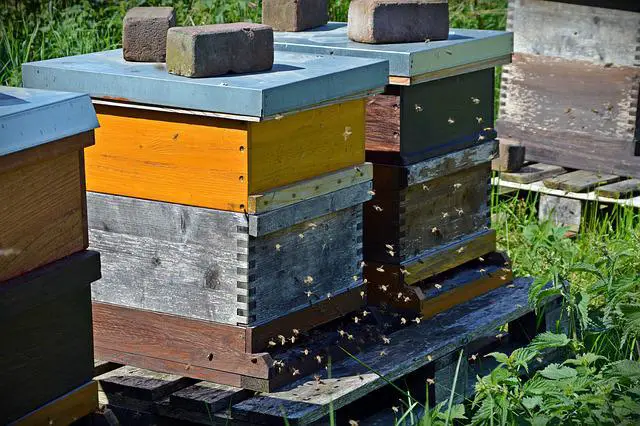
Beehive
A hive is a home for the bees.
There are different types of hive designs, but the most popular among beekeepers worldwide is a Langstroth hive. Other common beehives include the Warre hive, Dadant hive, and top bar hive. Here are the parts of a Langstroth Beehive
Top Cover
It protects the hive from the elements (rain and wind). It usually fits over the inner cover and extends to the top edge of the top hive body.
Inner Cover
The inner cover is placed on the top of the top super and under the top cover. It provides an air space under the top cover for insulation. It helps the beehive stay cool in the summer and retain warmth in winter.
Supers
This is where bees store surplus honey. Supers are available in 3 sizes: shallow, medium, and deep supers. A shallow super is ideal for beekeepers who don’t want to lift heavy objects. You can stack as many supers as you need for bees to store honey. The perfect time to add a super is when the bees have filled 80% of the top most super.
Hive Body
It is also known as the brood box. This is where the queen lays eggs, and the brood is raised.
Bottom Board
This is a flat board where the hive rests. It also includes the entrance through which the bees come and go. You can either choose a screened bottom board or a solid bottom board.
Frames
These are rectangles structures placed in the individual supers and brood chamber where the bees build comb. They are usually made of wood, although plastic frames are increasingly common. They are made to fit the three sizes of supers( deep, medium, and shallow)
Queen Excluder
This is a screen with openings that cannot fit the queen, but other bees can pass through. It helps keep the queen bee from laying eggs in the honey supers by confining her to the brood box.
Foundations
Foundation is material that is provided to bees to build comb on. There are two types of foundation.
Wax foundation
This is pure beeswax formed into sheets
Plastic foundation
It contains a plastic core that is usually coated by a thin layer of wax.
Foundation is made for all three sizes of frames.
A Queen Catcher
This is an essential tool to have when you want to keep the queen separated for a while, like when doing a thorough inspection on your hive. It is better to keep her in a catcher so that you don’t lose her in the process. It also helps you to examine the queen without hurting her.
A Hive Stand
A hive stand keeps the hive off the ground. It helps to keep the hive off the flooding water, damp floor, weeds and offers protection from insects. You can use pallets, cinder blocks, bricks, or logs.
Entrance reducer
An entrance reducer is used to limit the size of the entrance. It is beneficial for weak colonies, when moving a colony or in winter to reduce air drafts in the hive.
Super Spacer
It is placed between the honey supers and the brood chamber to create space for pollen patties.
A Slatted Rack
A slatted rack is an optional piece of equipment that a beekeeper use in the hive to ease congestion. It helps create room for the bees between the entrance and the brood chamber.
A Frame Grabber
A frame grabber is a spring-loaded tool that will help you grasp a frame with just one hand. When you are using it, it makes it easy to inspect both sides and not put your hands on the frame.
Feeders
A feeder holds the sugar syrup that is fed to the bees when there is a nectar shortage. It is essential at the onset of colony establishment and during the cold months of winter. There are various types of feeders; some are placed at the entrance, while others are placed in the hive. Here are the different types of feeders:
Entrance feeder
This is the significant type of feeder consisting of a jar loaded with sugar syrup and a feeding tray. While using this type of feeder, you can keep track of the feed level since the jar sits outside the hive. However, it may attract robbing from neighboring colonies.
Top feeders
This is a well-built feeder that can hold a large amount of syrup. It is easy to refill the feeder without disturbing the bees.
In-hive feeders
An in-hive feeder is the best way to keep your colony safe from other bee colonies. It replaces one of the frames and is placed inside the hive. It comes with a unique feeding tray to keep the bees from drowning.
More articles you may like to read –
Best Essential oils for Hives
Can you reuse brood comb?
Why should l use wax on my wooden beehives?
Why are bee suits white? How reliable are bee suits?
Other Beekeeping Tools
Bee Smoker
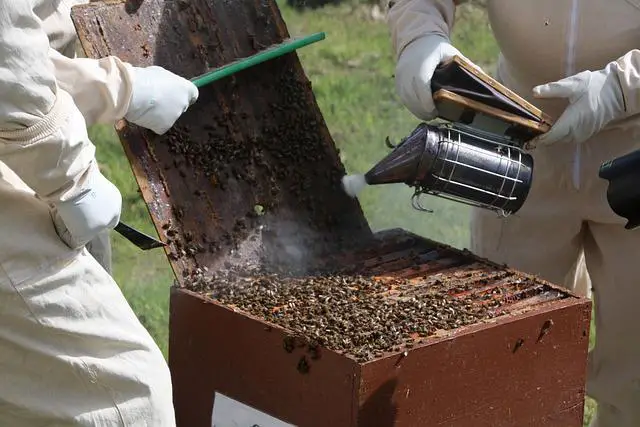
A bee smoker is a handy tool for a beekeeper to calm the bees during inspection or harvesting. The smoke also masks the pheromones given off by guard bees, therefore, minimizing the defensive reaction of the colony. It is advisable to select a good stainless steel smoker with enough capacity so that you don’t have to reload burning materials during an inspection. It consists of a fuel chamber, bellow, and a guard. While using the smoker, you should keep some sand handy to put on the smoker after you are through to extinguish the remaining flames or coals.
Clean Burlap
Lean burlap is fuel for the smoker, which produces low-temperature smoke. It is good to ensure that the burlap doesn’t contain grease, oil, or hazardous chemicals that may kill your bees.
Hive Tool
A hive tool resembles a pry bar. It has a bent lip on one side to help pry frames and boxes apart. Honey bees tend to seal every opening in the hive with propolis.
Honey Extractor
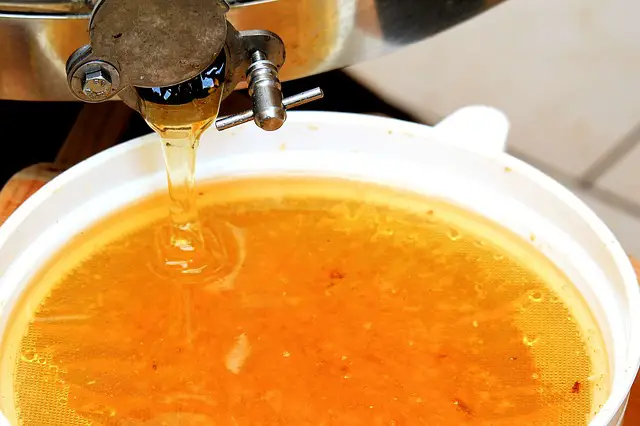
A honey extractor helps to remove the honey from combs without destroying them. It consists of a cylindrical drum that holds a frame basket. By spinning it around, it hurls the liquid from combs. It is a great way to get honey from a Langstroth hive.
Uncapping Tool
If you don’t want to damage the honeycombs so that your colony doesn’t have to draw out a new comb, you will need an uncapping tool. It helps to uncap the honeycomb. You can either purchase an uncapping fork or a knife.
Bee Brush
A bee brush will help you remove bees from surfaces that you don’t want them to be like on your clothes and frames. It can also be beneficial to herd a swarm into a box. They have soft natural bristles that help to gently move the bees without hurting them or damaging their wings.
Books
Beekeeping requires extensive learning to succeed in managing your colony and make appropriate management decisions. Beekeeping books written by experts in the field will help you as you start the venture.
Queen Marker
Marking the queen helps you to track her with ease. While you can buy an already marked queen, having the marker with you is still good since the colony may replace the queen anytime. You may also decide to raise queens for your colonies. The marker should not contain any harmful chemicals.
Pollen Traps
Pollen traps are placed at the entrance of the hive. As the foragers pass through the screen, it scraps pollen from their legs. A beekeeper can collect pollen to store as a food supplement for bees or sale as a dietary supplement. It should not be placed on colonies for long periods of time not to affect the colony’s health.
Magnifying Glass
It helps you to inspect mites and observe eggs and larvae accurately. However, you should be careful not to burn the bees, especially the queen, with intense sun rays.
Log Book
This will help you to keep notes for several seasons.
Protective Gear
Beekeeping Suit
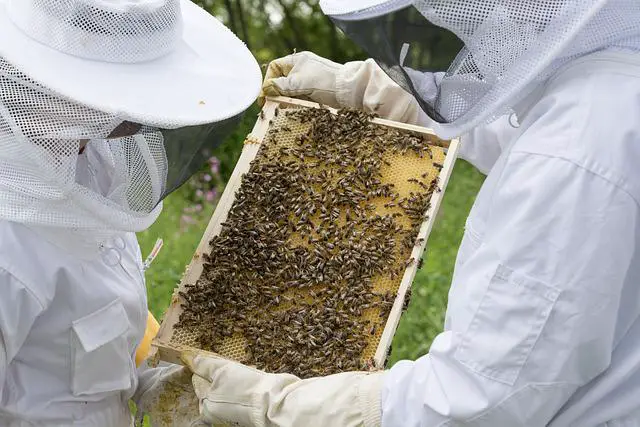
There are different suits made from unique materials to prevent the bees from stinging you. There are plenty of choices that you can pick from to get the job done. Bee suits can be made from polyester, cotton, or canvas–type material. You can purchase suits with veils attached to them.
Boots
While there are boots designed specifically for beekeeping, you can still wear whatever you have to protect your legs and feet from bee stings.
Protective veil
This is an essential piece of protective gear that many beekeepers use. It protects the head and neck area from stings. A sting on your face, eyes, or ears hurts more than any other body part. Even with a non-aggressive colony, it is advisable to protect your head.
Gloves
Gloves protect your hands and forearms from bee stings. They can be made from leather or rubber. They need to be fitting. Oversized gloves make it hard for you to get through hive inspection and make it easy to squash the bees.
A Jacket With a Veil
A jacket with a veil is an excellent option for many beekeepers since they are quick to put on, lighter, and have a veil integrated into the veil.
The Bees
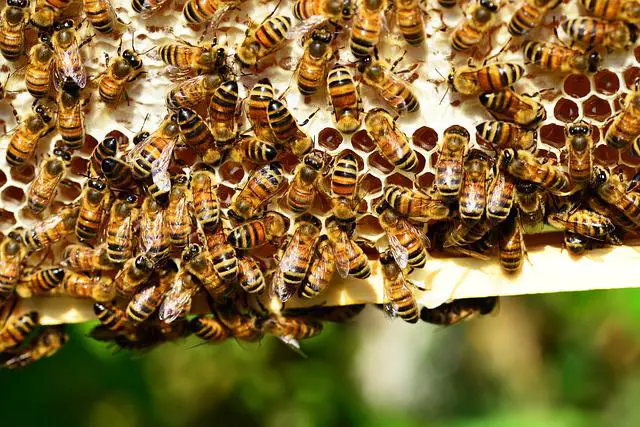
You can’t raise a bee colony without bees. You can acquire bees by buying a package, catching a swarm, buying a nucleus hive, or a complete hive.
A package
It contains a queen in a cage, a handful of drones, thousands of workers, and a perforated tin with syrup. Packages are ordered in pounds; one pound contains about 3500 bees. One package contains 2-5 pounds.
Nucleus Hive
A nucleus hive is a mini colony comprising five frames of honey and brood, a queen bee, and ample workers to maintain and raise the colony.
A Complete Hive
This is a well-established colony with a queen, sufficient comb, and enough bees for survival.
FAQs
What is the best month to start beekeeping?
Early spring. The bees will have enough time to establish their hives before the cold winter months.
How long will it take to establish a hive?
A new colony requires 3-5 months to be well established.
How often should you feed the new colony?
After installing the colony in early spring and when there are scanty nectar sources. You may also feed your colony in winter if the bees don’t have enough honey reserves.
What do l need to start a hive?
You will require a hive, bees, beekeeping tools, protective gear, and skills to start a hive.
What equipment does l need to harvest honey?
The tools you need to harvest honey include a smoker, bee brush, hive tool, and a clean bucket with a lead to place the frames.

